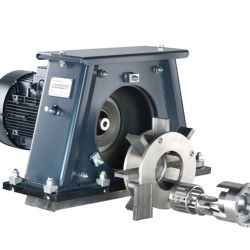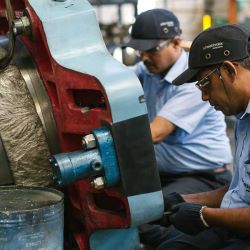Fingers on the pulse: blast technology and the Internet of Things
The revolution currently underway in manufacturing has many names. Here in Germany it’s often referred to as “Industry 4.0”, and globally we’re hearing a lot about the “Industrial Internet of Things”.
But whatever name we pick, the change rung in by this technology-driven new approach to manufacturing is rapid –and it’s everywhere. Blast equipment is no exception.
Whole armies of sensors, cameras and other measuring devices are conquering blast machines from airblast to wheelblast, from high-volume foundry machines to super-high-spec peening applications. All this data capturing and monitoring then helps control and adjust processes and workflows across the whole production.
Here’s a quick snapshot of what’s already possible today in terms of connected blast technology, and how this benefits production.
Controlling the process end-to-end
The first sectors adopting “Industry 4.0” principles were Medical and Aerospace manufacturing, where absolute process reliability and precision results have always been paramount. This uncompromising grip on production quality was usually achieved through labour-intensive visual checks, spot tests and other manual interventions.
Today, machines for these applications are designed for seamless integration into linked production lines, where the smooth journey of the workpiece should ideally not be interrupted by spot checks.
But replacing this watertight regime of close human supervision requires complex sensor systems before, after and inside the blast machine, as well as advanced controls to process sensor data and act on it.
Digital tracking of the workpiece starts before it even enters the equipment. As it approaches the machine, camera and laser systems identify the workpiece (by shape, barcode, etc), capture data and check it against saved profiles.
This means the machine can process a mix of workpieces without stopping production or having to manually alert the machine to any changes.
Cameras also capture the position of workpieces for automated handling and the number of workpieces per tray, which can then be checked against the batch ticket. The machine can then call up the right programme for workpiece or batch.
Inside the machine, laser and camera systems track the part during the blast process. Laser scanning systems find and measure out masked areas on the part and adjust for tolerances from previous work steps. Lasers can also control the rotation of the workpiece during the blast process.
Additional measuring systems inside the machine continuously check process parameters – abrasive flow, for example – and readjust these dynamically to keep them within the set range.
The tracking does not stop after the workpiece has exited the machine. Laser and paint marking stations label or mark workpieces that have been blasted correctly, which is important for any parts where it’s not immediately obvious that they have been processed – internally blasted or peened workpieces, for example.
Systems for the contactless measuring of surface roughness are used for continuous, automatic quality control – in conjunction with camera systems that capture bar codes, QR codes and laser markings on each part to file roughness readings and prevent the mixing up of batches.
Conclusion
The foundations for the Industrial Internet of Things are in place. The potential now lies in using this rich machine and process data in factory-wide systems to improve operations further. Ever more intelligent machines call for their ever more intelligent integration and use.


